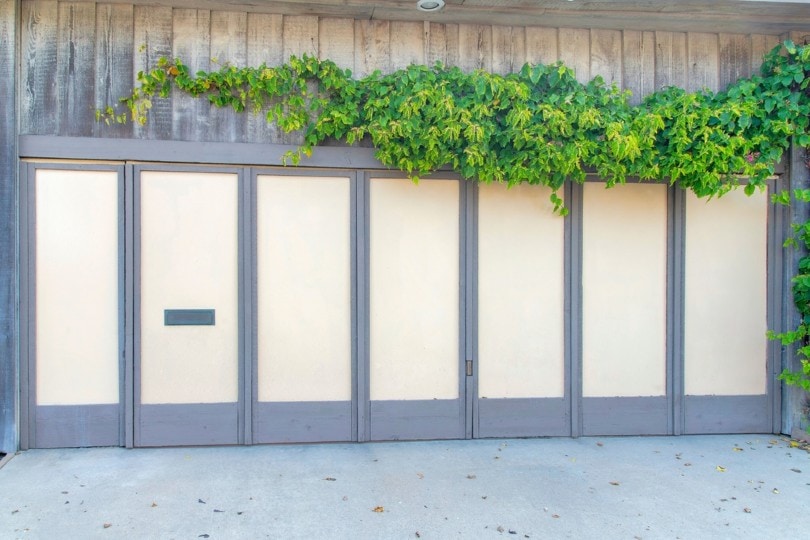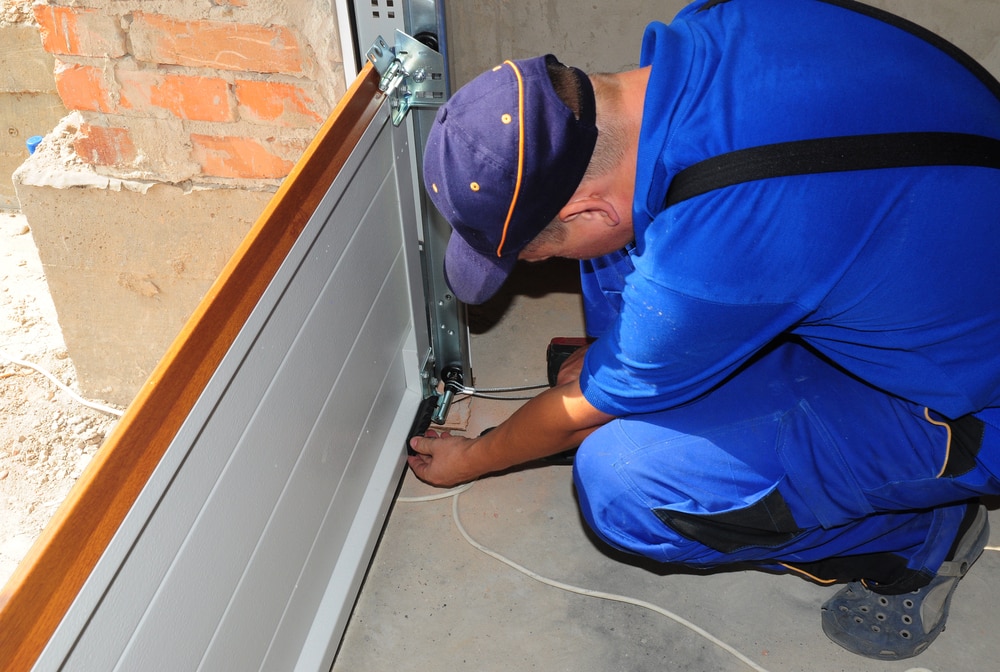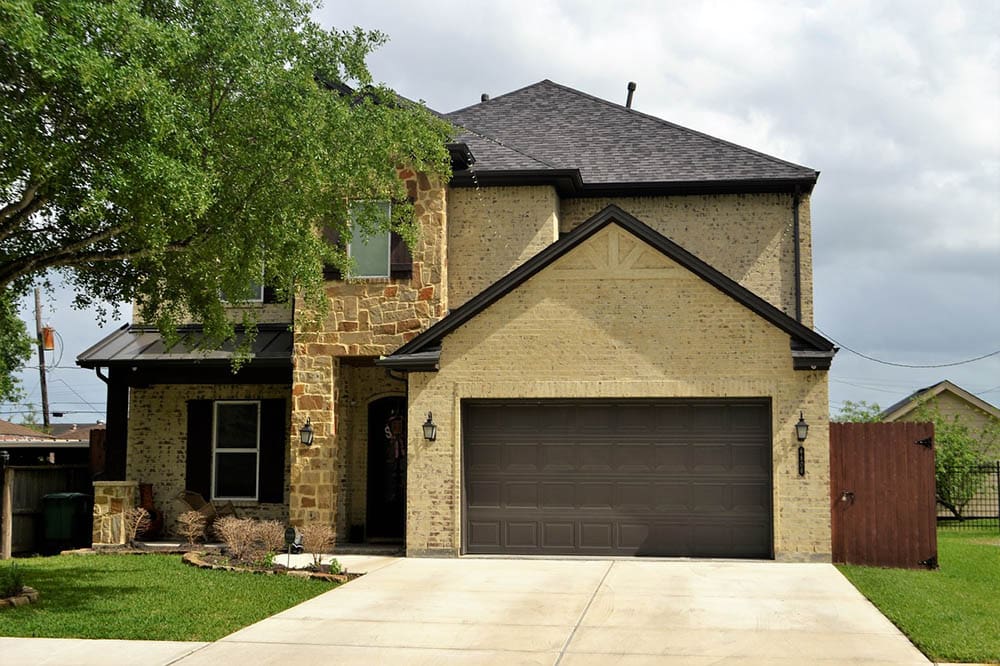How to Manually Open a Garage Door in 5 Steps (with Pictures)
-
- Last updated:

Whether you need to get the car out of the garage to get to work or get it into the garage to protect it from bad weather, you need your garage door functioning at all times.
When the power goes out, the flick of a switch won’t do anything to get your door moving. But you can’t put your life on hold or delay a rainstorm just because your garage won’t open. Instead, you’ll need to find an alternative solution to get your car in and out.
If your garage door opener isn’t working as it should, we’ll show you how to open a garage door without power so you can get on with your day.

How to Open a Garage Door Without Power
Garage doors usually have emergency release mechanisms as a backup if the motor fails or the power goes out. It only takes a few seconds to disconnect the door and allow it to move manually.
1. Unlock the Door
If the door is in the closed position, disengage the locks on either side of the door. Ensure the door is closed before releasing the emergency handle. Otherwise, the door might slam closed if there’s something wrong with the springs holding it up.

2. Unplug the Door Opener
The automatic garage door opener is plugged into an outlet near the end of the track. Unplug the door to prevent the opener from trying to re-engage if the power suddenly comes back on. Doing so will keep you from having issues when trying to reconnect the door later.
3. Disconnect the Door from the Door Opener
There will be a red handle on a string dangling from the garage door track. Carefully but firmly pull the handle down until you hear a loud click. Depending on the type of garage door, you may see a small spring stretch out, or the arm attached to the string might drop down, indicating that the track opener is disengaged.
Don’t yank too hard on the cord, or it could snap. If there is too much resistance when you try to pull it, make sure the door is fully closed.
Pulling the cord disconnects the door trolley from the arm that moves along the track to open and close the door under power. After releasing the trolley, the door will move freely up and down with manual force.
Consult a garage door expert
Find a garage door specialist in your area, and get free, no-commitment estimates for your project.


4. Lift the Garage Door Open
Grab the handle or the bottom of the door and lift the garage door open. Make sure it is in the fully open position before driving out. Have someone hold up the door to keep it in check if possible.
5. Close the Door
After you exit the garage, make sure you close the door. A strong wind may be all it takes to make the door slam shut, so keeping it closed and locked will prevent unexpected damage or injury.

How to Reconnect Your Garage Door
After the power comes back on, you can get to work reconnecting the door to the opener.
1. Shut the Door
Close the garage door before reconnecting the opener. The door should be touching the ground. Make sure it is unlocked.
2. Plug in the Door Opener
Plug your door opener back into the outlet at the end of the track.

3. Re-Engage the Emergency Handle
Pull the emergency cord to snap the lock back into the engaged position. You should hear a loud click when it snaps into place. Some garage door models require you to pull the string down and toward the door to re-engage the lever.
4. Activate the Door Opener
After resetting the emergency handle, activate the door opener. You should see the carriage on the track move into place and click into the garage door arm. If your door does not do this automatically, you may need to lift the door 1–2 feet off the ground, which will manually connect the arm back into the carriage.
5. Test the Door
Once the door connects back to the opener, perform a test run to make sure it opens and closes smoothly. If it gives off any strange noises or doesn’t close properly, you may need to call a repair tech to check it out.

Can I Open My Garage Door From the Outside?
In the rare event that your power goes out and you don’t have a key to your front door, you may still be able to open your garage door from the outside to get in.
If your garage door has a small lock in the center toward the top, then you can access an emergency release cable. You’ll need the key to unlock it. Unlock the cord and pull it to release the door from the automatic carriage so you can operate it manually.
Below the cable lock near the center of the door, you should see a handle with another lock above it. Use your key on the lock to free the handle. Turn the handle to an upright vertical position and lift your door open.

Why Is My Door Hard to Lift?
If your door is hard to open after releasing the emergency handle, you may have a broken or malfunctioning spring. Large torsion springs near the top of the door have the power needed to open the door. Even though the door is heavy, weighing anywhere from 100 pounds to over 350 pounds, it’s easy to operate because the springs do the lifting. But when those springs are damaged, you don’t get any help with all of that weight.
Trying to fix these springs is extremely dangerous as they’re under tension and can cause severe injury. If you’re having trouble with damaged components, it’s critical to contact a professional garage door repair technician.

Final Thoughts
A power outage can make you feel stuck if you can’t get your car in or out of the garage. You can take proactive measures to prevent problems by installing an exterior manual release system as described above. Better still, installing a battery backup system for your door will ensure you can still get the power you need even if the electricity goes out.
And of course, when all else fails, use these five simple steps to get your garage door open when the motor won’t work at all, and you’ll never have to feel stranded again.
Featured Image Credit: Jason Finn, Shutterstock
Contents

